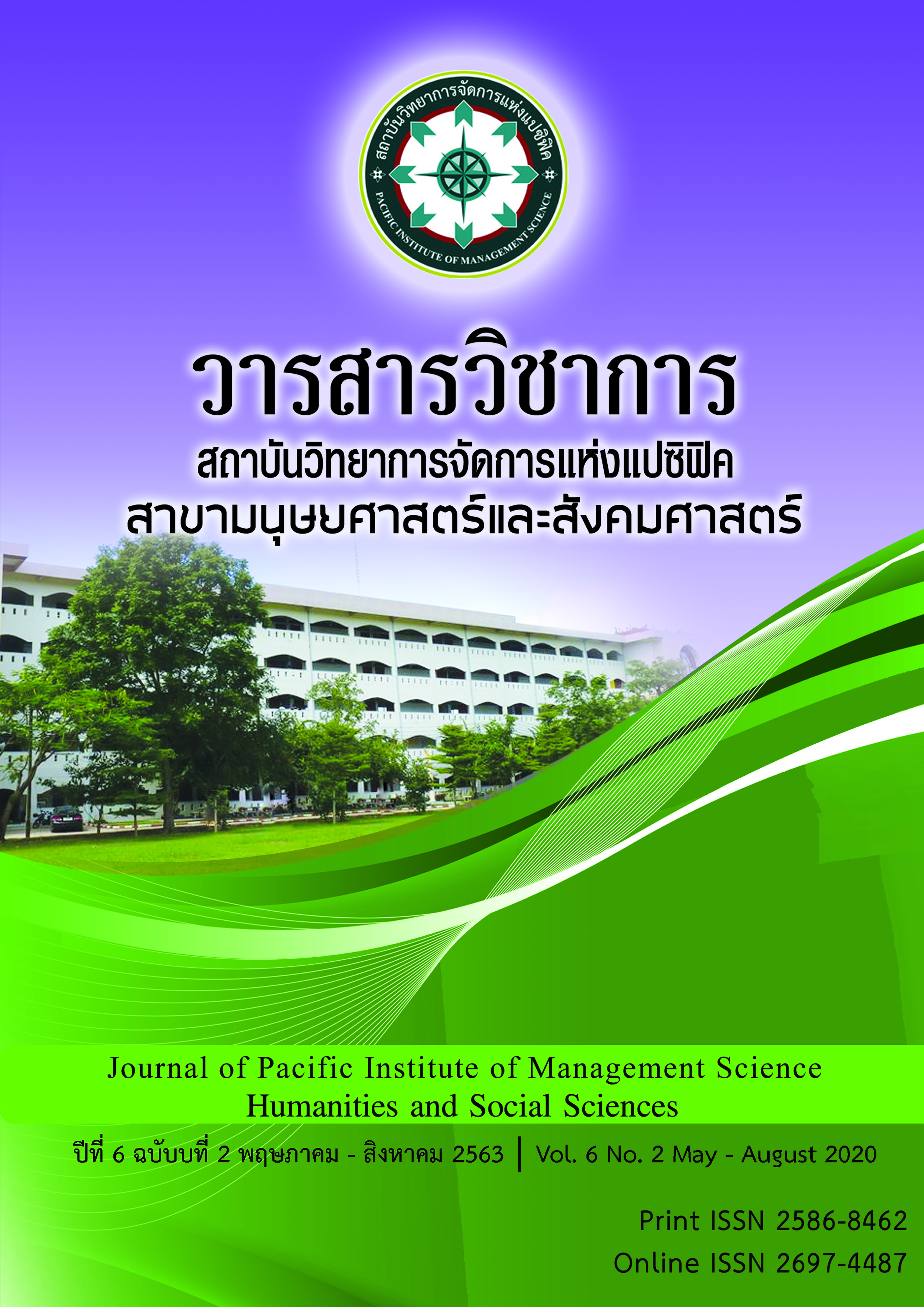Implementation of the Eastern Economic Corridor (EEC) Development Project
Keywords:
Development project, the Eastern Economic Corridor, ImplementingAbstract
The study was aimed at 1) investigating the achievements of the EEC Policy and 2) ferreting out the problems and obstacles pertaining to the EEC Policy implementation. The study was qualitative in character.
The sample of the research was composed of 22 key informants; they were selected by means of purposive sampling technique. The key informants included the following persons : high-ranking policy makers, community leaders, rare local people, and entrepreneurs, all of whom were insightful about the ECC Policy. The study tool was a semi-structured interview guide. The collected data were analyzed by description.
The results of the data analysis were specified below :
- On the objectives of the EEC Policy, it can be said that the EEC is a program designed to develop the areas along the Eastern seashore; it is an extension of the Eastern Seaboard; it is a strategy gearing up to drive Thailand toward becoming the country with “wealthiness, security, and sustainability” according to the “Thailand 4.0” Strategy. The Government is determined to make a great investment to upgrade the quality of life of people living in the these provinces, namely Chonburi, Rayong and Chachoengsao. These three provinces will be turned into the World-Class Economic Zone.
- On the participation of agencies concerned, the following points can be made : the maximum achievements of the infrastructure in the EEC areas necessitate the corporation and collaboration of the public sector, the private sector and the civil society sector not to mention the cooperation of AEC. By so doing foreign investors would have strong confidence and would be willing to come and invest in the EEC areas. Thus, it would help drive the EEC Program toward “Thailand 4.0”.
- On roles and support on the part of community members and the interest groups, in a nutshell, the roles and support of these groups are of importance in driving the development of the EEC areas. The roles and support should be concrete and practical in nature. For instance, they should form groups with an eye to gaining insight into ways or methods of developing the EEC areas. Great efforts must be exerted to urge local people to get involved in the activities of the EEC Program.
- On local measure and tax benefits relevant to the EEC Program, laws concerning tax benefits should be enforced to create confidence of various groups concerned such as business persons and people in the locality. Legal measures and tax benefits are deemed highly helpful in enhancing the competitive capability in the EEC areas and in motivating foreign investors from China and European countries to come and invest in the EEC areas.
- On the environmental, economic, social, political and technological conditions, these conditions have an important bearing on the EEC program due to the factor that the favorable conditions would bring about trade, investment, new industries and employment in, a great members, whereas the political condition would create investors’ trust and confidence.
- 6.On problems and obstacles concerning the EEC policy implementation, in the past, pollution problems and their solutions especially environmental problems were a great hindrance to the driving of the strategy. In other words, the environmental problems were not favorable to construct infrastructures and public utilities or a continual and interrelated fashion; development in various area appeared to fall apart. As a consequence, a variety of problems arose such as transportation and traffic problems, criminal problems, foreign migrant problems, waste collection problems, electricity and water supply problems, rising cost of living, urban plan problems, and so on.
References
สํานักงานคณะกรรมการส่งเสริมการลงทุน : https://www.boi.go.th/th/index
Jacop ,Charles E. (1966). Policy and Bureaucracy. Prince, N.J. : D. Van Nostrand Charles
Easton, David. (1953). The Political System An Inquiry in to the State of Political Science. New York : Alfred A. Knorf.
Greenwood, William T. (1965). Management and Organizational Behavior Theories : An Interdisciplinary Approach. Ohio : South Western.
Gunn, Lewis A. (1978). Why is Implementation so Difficult, Management Service in Government.
Van Meter and Van Horn. (1975). The Policy Implementation Process : A Conceptual Framework. Administration and Society. Vol. 6, No. 4, February.
Pressman, J. L. & Wildavsky, A. (1973). Implementation. (2 nd ed). California: University of California.
Sharkansky, Ira. (1970). “The Political Scientist and Policy Analysis : An Introduction,” in Policy Analysis in Political Science, ed. Ira Sharkansky .Chicago : Markham Publishing Company.
Downloads
Published
Issue
Section
License
บทความที่ได้รับการตีพิมพ์เป็นลิขสิทธิ์ของ สถาบันวิทยาการจัดการแห่งแปซิฟิค
ข้อความที่ปรากฏในบทความแต่ละเรื่องในวารสารวิชาการเล่มนี้เป็นความคิดเห็นส่วนตัวของผู้เขียนแต่ละท่านไม่เกี่ยวข้องกับสถาบันวิทยาการจัดการแห่งแปซิฟิค และคณาจารย์ท่านอื่นๆในสถาบันฯ แต่อย่างใด ความรับผิดชอบองค์ประกอบทั้งหมดของบทความแต่ละเรื่องเป็นของผู้เขียนแต่ละท่าน หากมีความผิดพลาดใดๆ ผู้เขียนแต่ละท่านจะรับผิดชอบบทความของตนเองแต่ผู้เดียว







